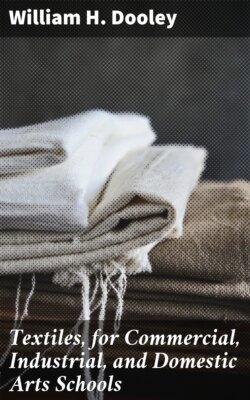Читать книгу Textiles, for Commercial, Industrial, and Domestic Arts Schools - William H. Dooley - Страница 9
На сайте Литреса книга снята с продажи.
WOOL SORTING
ОглавлениеTable of Contents
Fleece wool as it comes to the mill is rolled up in bundles and must be sorted. This process consists in sorting and classifying the fibers of the fleece. Not only do the various species of sheep furnish widely different qualities of wool, but different qualities are obtained from the same animal, according to the part of the body from which the wool is taken. This variation in some instances is very marked, and sometimes is greater than that which separates the wools of the different breeds of sheep. Hence the sorting and classing of wool become necessary for the production of good, sound yarn of even quality.
An attempt to utilize the fleece as a whole would result in the spinning of uneven, faulty, and unsatisfactory yarns. As many as twelve or fourteen sorts may be obtained from one fleece (by very fine sorting), but generally not more than five or seven are made. The following table shows the relative qualities of wools from the various parts of a Merino sheep:
1 and 2. Head (top and sides): The wools grown on these parts are remarkable for length of staple, softness, and uniformity of character. They are usually the choicest wools in the fleece.
3. Upper part of the back: This also is a wool of good, sound quality, resembling in staples Nos. 1 and 2, but not as soft or as fine of fiber.
4. Loin and back: The staple here is comparatively short, not as fine, but generally of unvarying character, sometimes rather tender.
